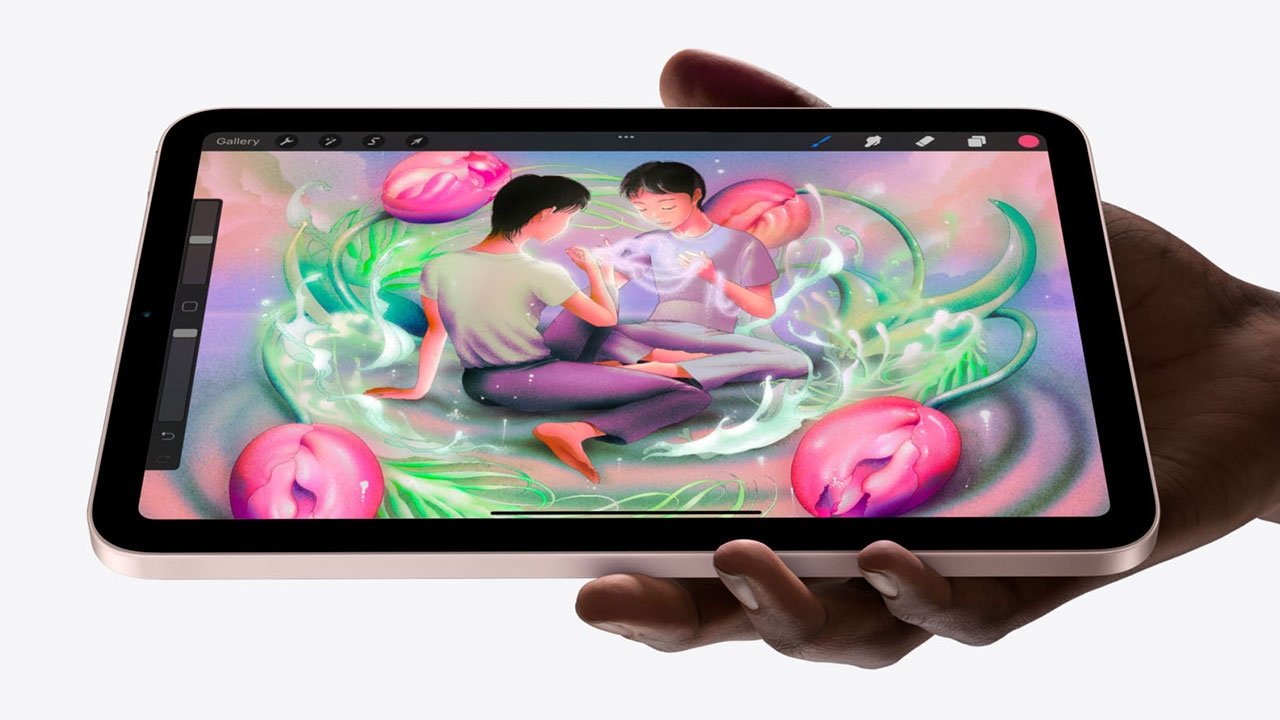Apple is bringing 5G connectivity to iPad mini, but the pint-sized tablet does not include support for speedy mmWave bands.
Unveiled on Tuesday, the sixth-generation iPad mini delivers a host of upgrades including an all-screen design, A15 Bionic integration, improved front- and rear-facing cameras, USB-C and more.
The smallest model in Apple's iPad lineup now boasts 5G connectivity, though only sub-6GHz bands are supported. As noted in Apple's tech specs, iPad mini is unable to connect to mmWave 5G bands, reducing its theoretical data transfer capabilities.
While mmWave is a burgeoning technology, it promises speeds in excess of 4 gigabits per second and is expected to become widely available in most metropolitan areas. The high-frequency bands are brittle, however, and require relatively close proximity to a supporting cell tower for optimal throughput. Sub-6GHz bands are more robust and, thanks to a reliance on low frequencies, can travel long distances and through obstacles.
Apple's iPad Pro integrates support for mmWave connections, as does iPhone 12 and the latest iPhone 13. Availability is still limited to U.S. models, including the iPhone 13 series, but future hardware is expected to support the speedy protocol as it proliferates worldwide.
The limitation is something to consider for potential iPad mini buyers. Apple took two and a half years to update its most portable iPad and if that trend continues, buyers today will be unable to access fast mmWave wireless connections as they roll out.
Preorders for the new iPad mini are live, with third-party resellers already offering deals on the tablet. Shipments are due to arrive on Sept. 24.
 AppleInsider Staff
AppleInsider Staff








 Brian Patterson
Brian Patterson
 Charles Martin
Charles Martin


 Malcolm Owen
Malcolm Owen
 William Gallagher
William Gallagher
 Christine McKee
Christine McKee
 Marko Zivkovic
Marko Zivkovic







6 Comments
Not surprising for the target market and price point. I suppose Apple could do an iPad mini Pro and beef up the specs if they felt compelled to bring mmWave into iPads sooner than the technology and availability becomes ubiquitous, This would be a niche in a niche market, a cubby market so to speak.
In my opinion Apple has done a pretty good job of partitioning the right combinations of functionality and technology across the mix of iPads they offer, just like they’ve done with the iPhone product line. They could probably simplify both of these product lines by loading up everything on all models and simply offering different sizes/form factors. This would mean compromising on something, most notably the selling price. Customers with modest needs, e.g., primary education market, would end up paying a lot more and getting a bunch of stuff they don’t need. This could price the product entirely out of some markets.
Don’t underestimate the amount of insight, knowledge, and strategy that goes into product marketing. Figuring out the right product to build, i.e., marketing and architecture, is every bit as important as figuring out how to build the product right, i.e., engineering and development. In the Universe of Apple, this can be called the Jobs-Wozniak Principle.
The iPad mini 6 supports 5G up to 3.5 Gbps. I don’t think any US carrier has support for speeds that high though. I can get just under 1Gbps near my home on T-Mobile with their sub-6 bands which will be fine for my use. I’d be curious if anyone has used mmWave extensively and whether they think it being missing on the iPad mini is an issue. It certainly isn’t for me but I’ve never used mmWave.
Finding the balance between marketing bullet points and real world, and near term future proofing, applicability. Apple usually gets that close to right.
It feels like Apple held back some features for the new iPad Mini. It is missing MM wave 5G, LIDAR and has a binned slower CPU than the iPhone. Perhaps we will get those in the Mini Pro next year along with a M1X processor. The feature I would love to see on an iPad is the ability to share a phone number with your iPhone like your Apple Watch can. It has full cellular, a microphone and a speaker so why not? Time to wake up those dozing cellular providers.